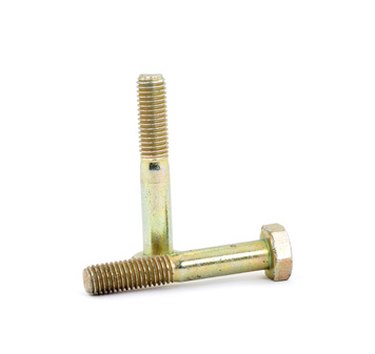
B7 and B7M bolts are made of a carbon steel that is classified as an alloy steel. They contain a specified minimum content of cobalt, columbium, boron, aluminum, molybdenum, nickel, titanium, vanadium and zirconium. For example, if the chromium content is more than 4-percent, the metal starts to become stainless instead of alloy.
Similarities
Video of the Day
B7 and B7M bolts are heat treated alloy steel studs that are commonly used for high-pressure and high-heat operations. They come in sizes ranging from one-quarter inch to 4-inches in diameter. Both of these bolt grades are used as stud and anchor bolts in construction projects.
Video of the Day
B7 Bolts
The B7 grade bolts are a heat treated chromium-molybdenum steel. This grade of bolt is commonly used for fastening of medium high temperature service materials. They have a liquid quench range of 50 to 900 degrees Fahrenheit and an air quench range of -40 to 900 degrees Fahrenheit.
B7M Bolts
The minimum yield and tensile strength requirements are reduced in the B7M grade bolt as opposed to the B7 grade bolt. The hardness is kept at 235 Brinell Maximum. This bolt is often opted for in corrosive environments due to its air quench of -50 to 900 degrees Fahrenheit.
Terms
Tensile strength is how much load a bolt can take before breaking. The SAE grading system numbers tensile strength from 1 to 8. The higher the number the stronger the bolt is.